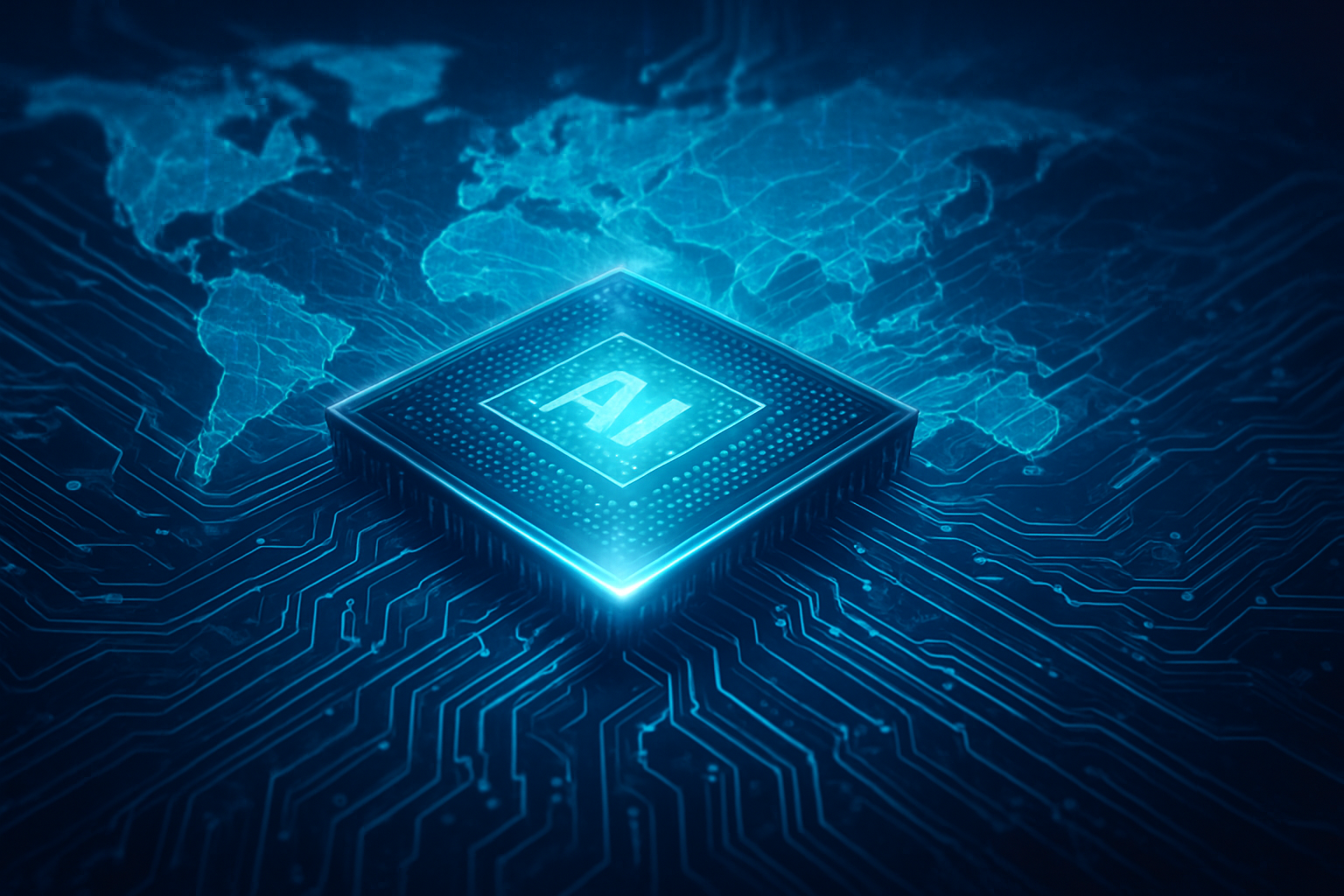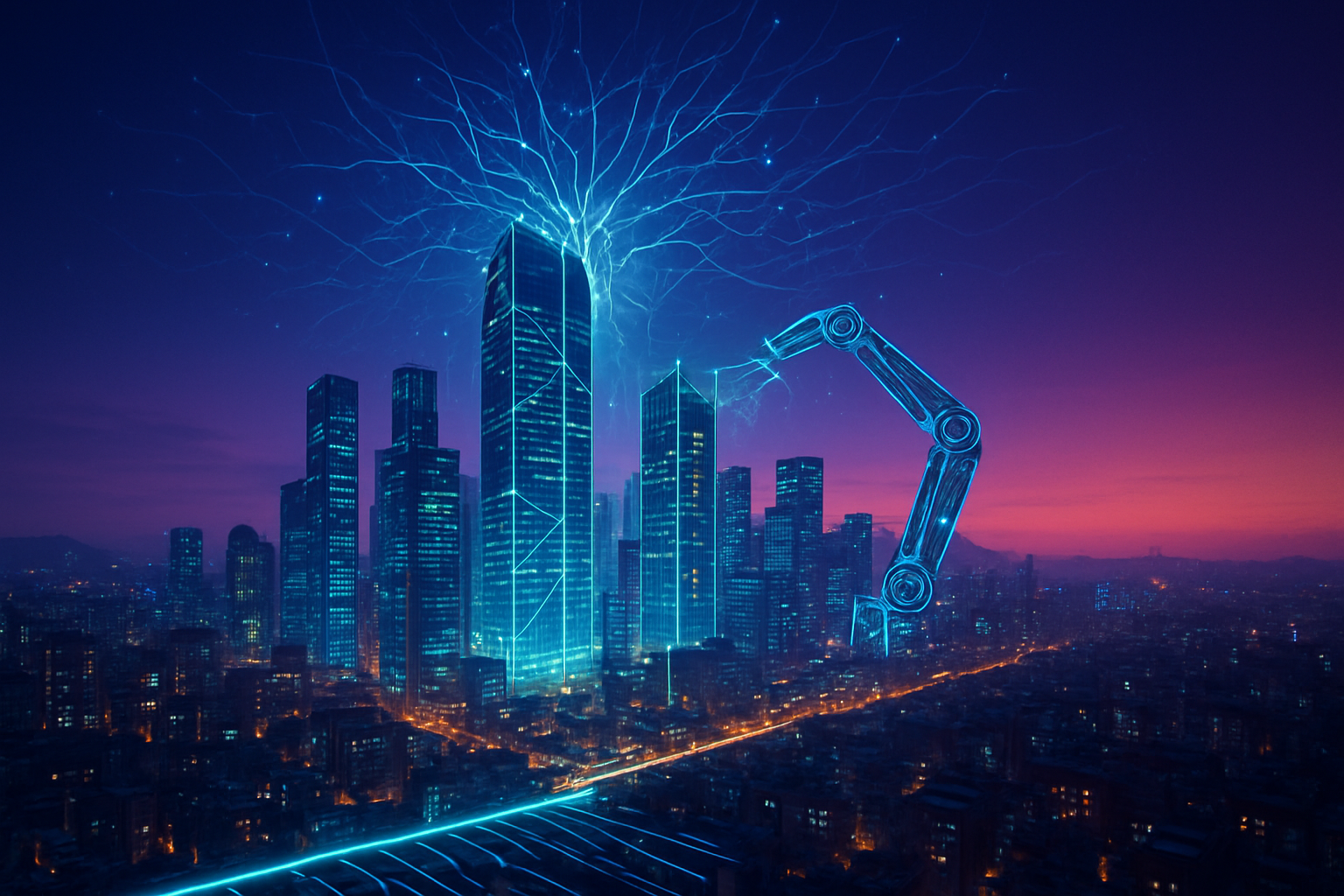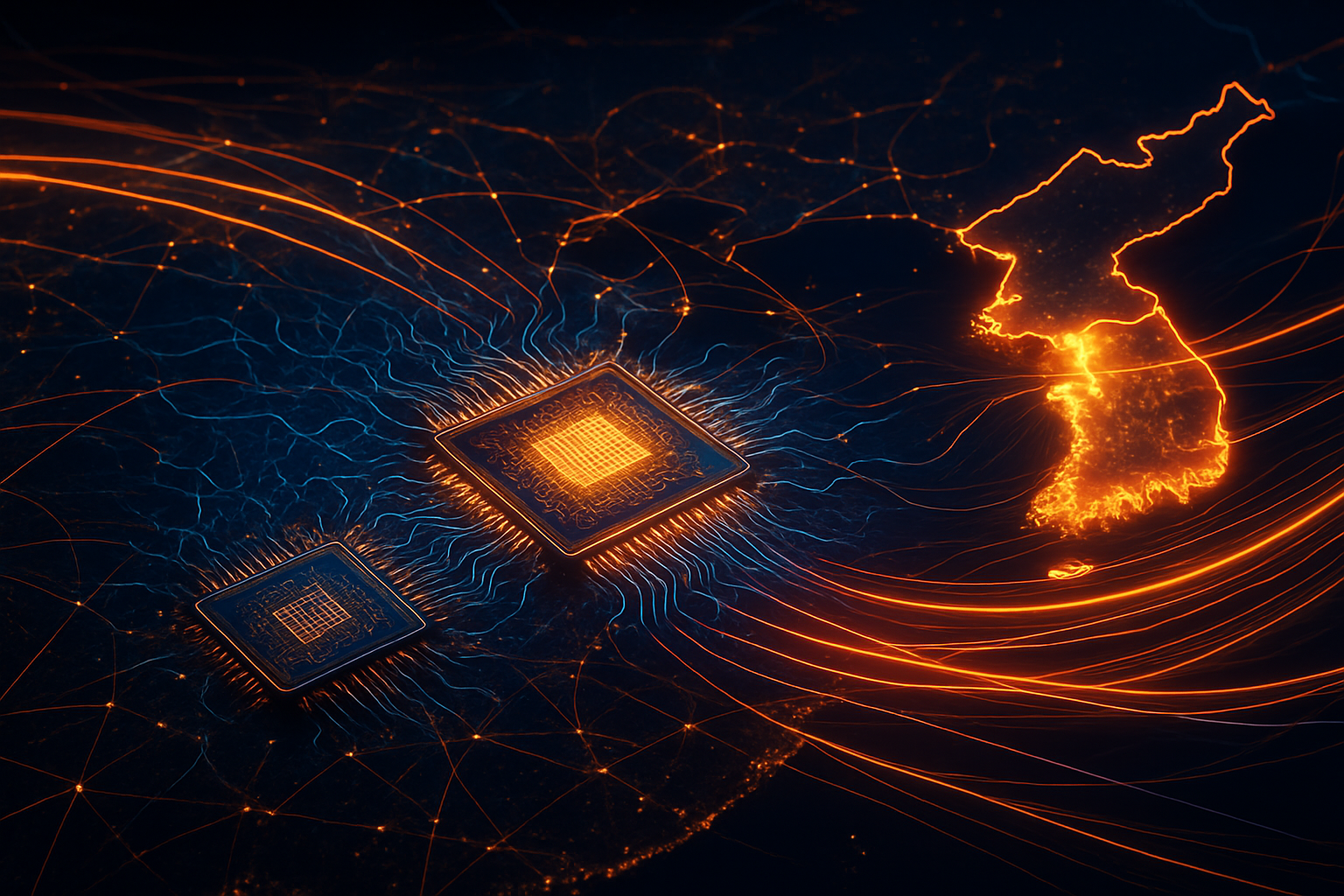The global semiconductor industry, a critical enabler of artificial intelligence and advanced technology, is increasingly under pressure to decarbonize its operations and supply chains. A recent report by the Institute for Energy Economics and Financial Analysis (IEEFA) casts a stark spotlight on South Korea, revealing that the nation's leading semiconductor manufacturers, Samsung (KRX:005930) and SK Hynix (KRX:000660), face significant and escalating carbon risks. This vulnerability stems primarily from South Korea's sluggish adoption of renewable energy and the rapid tightening of international carbon regulations, threatening the competitiveness and future growth of these tech titans in an AI-driven world.
The IEEFA's findings underscore a critical juncture for South Korea, a global powerhouse in chip manufacturing. As the world shifts towards a greener economy, the report, titled "Navigating supply chain carbon risks in South Korea," serves as a potent warning: failure to accelerate renewable energy integration and manage Scope 2 and 3 emissions could lead to substantial financial penalties, loss of market share, and reputational damage. This situation has immediate significance for the entire tech ecosystem, from AI developers relying on cutting-edge silicon to consumers demanding sustainably produced electronics.
The Carbon Footprint Challenge: A Deep Dive into South Korea's Semiconductor Emissions
The IEEFA report meticulously details the specific carbon challenges confronting South Korea's semiconductor sector. A core issue is the nation's ambitious yet slow-moving renewable energy targets. South Korea's 11th Basic Plan for Long-Term Electricity Supply and Demand (BPLE) projects renewable electricity to constitute only 21.6% of the power mix by 2030 and 32.9% by 2038. This trajectory places South Korea at least 15 years behind global peers in achieving a 30% renewable electricity threshold, a significant lag when the world average stands at 30.25%. The continued reliance on fossil fuels, particularly liquefied natural gas (LNG), and speculative nuclear generation, is identified as a high-risk strategy that will inevitably lead to increased carbon costs.
The carbon intensity of South Korean chipmakers is particularly alarming. Samsung Device Solutions (DS) recorded approximately 41 million tonnes of carbon dioxide equivalent (tCO2e) in Scope 1–3 emissions in 2024, making it the highest among seven major global tech companies analyzed by IEEFA. Its carbon intensity is a staggering 539 tCO2e per USD million of revenue, dramatically higher than global tech purchasers like Apple (37 tCO2e/USD million), Google (67 tCO2e/USD million), and Amazon Web Services (107 tCO2e/USD million). This disparity points to inadequate clean energy use and insufficient upstream supply chain GHG management. Similarly, SK Hynix exhibits a high carbon intensity of around 246 tCO2e/USD million. Despite being an RE100 member, its current 30% renewable energy achievement falls short of the global average for RE100 members, and plans for LNG-fired power plants for new facilities further complicate its sustainability goals.
These figures highlight a fundamental difference from approaches taken by competitors in other regions. While many global semiconductor players and their customers are aggressively pursuing 100% renewable energy goals and demanding comprehensive Scope 3 emissions reporting, South Korea's energy policy and corporate actions appear to be lagging. The initial reactions from environmental groups and sustainability-focused investors emphasize the urgency for South Korean policymakers and industry leaders to recalibrate their strategies to align with global decarbonization efforts, or risk significant economic repercussions.
Competitive Implications for AI Companies, Tech Giants, and Startups
The mounting carbon risks in South Korea carry profound implications for the global AI ecosystem, impacting established tech giants and nascent startups alike. Companies like Samsung and SK Hynix, crucial suppliers of memory chips and logic components that power AI servers, edge devices, and large language models, stand to face significant competitive disadvantages. Increased carbon costs, stemming from South Korea's Emissions Trading Scheme (ETS) and potential future inclusion in mechanisms like the EU's Carbon Border Adjustment Mechanism (CBAM), could erode profit margins. For instance, Samsung DS could see carbon costs escalate from an estimated USD 26 million to USD 264 million if free allowances are eliminated, directly impacting their ability to invest in next-generation AI technologies.
Beyond direct costs, the carbon intensity of South Korean semiconductor production poses a substantial risk to market positioning. Global tech giants and major AI labs, increasingly committed to their own net-zero targets, are scrutinizing their supply chains for lower-carbon suppliers. U.S. fabless customers, who represent a significant portion of South Korea's semiconductor exports, are already prioritizing manufacturers using renewable energy. If Samsung and SK Hynix fail to accelerate their renewable energy adoption, they risk losing contracts and market share to competitors like Taiwan Semiconductor Manufacturing Company (TSMC) (NYSE:TSM), which has set more aggressive RE100 targets. This could disrupt the supply of critical AI hardware components, forcing AI companies to re-evaluate their sourcing strategies and potentially absorb higher costs from greener, albeit possibly more expensive, alternatives.
The investment landscape is also shifting dramatically. Global investors are increasingly divesting from carbon-intensive industries, which could raise financing costs for South Korean manufacturers seeking capital for expansion or R&D. Startups in the AI hardware space, particularly those focused on energy-efficient AI or sustainable computing, might find opportunities to differentiate themselves by partnering with or developing solutions that minimize carbon footprints. However, the overall competitive implications suggest a challenging road ahead for South Korean chipmakers unless they make a decisive pivot towards a greener supply chain, potentially disrupting existing product lines and forcing strategic realignments across the entire AI value chain.
Wider Significance: A Bellwether for Global Supply Chain Sustainability
The challenges faced by South Korea's semiconductor industry are not isolated; they are a critical bellwether for broader AI landscape trends and global supply chain sustainability. As AI proliferates, the energy demands of data centers, training large language models, and powering edge AI devices are skyrocketing. This places immense pressure on the underlying hardware manufacturers to prove their environmental bona fides. The IEEFA report underscores a global shift where Environmental, Social, and Governance (ESG) factors are no longer peripheral but central to investment decisions, customer preferences, and regulatory compliance.
The implications extend beyond direct emissions. The growing demand for comprehensive Scope 1, 2, and 3 GHG emissions reporting, driven by regulations like IFRS S2, forces companies to trace and report emissions across their entire value chain—from raw material extraction to end-of-life disposal. This heightened transparency reveals vulnerabilities in regions like South Korea, which are heavily reliant on carbon-intensive energy grids. The potential inclusion of semiconductors under the EU CBAM, estimated to cost South Korean chip exporters approximately USD 588 million (KRW 847 billion) between 2026 and 2034, highlights the tangible financial risks associated with lagging sustainability efforts.
Comparisons to previous AI milestones reveal a new dimension of progress. While past breakthroughs focused primarily on computational power and algorithmic efficiency, the current era demands "green AI"—AI that is not only powerful but also sustainable. The carbon risks in South Korea expose a critical concern: the rapid expansion of AI infrastructure could exacerbate climate change if its foundational components are not produced sustainably. This situation compels the entire tech industry to consider the full lifecycle impact of its innovations, moving beyond just performance metrics to encompass ecological footprint.
Paving the Way for a Greener Silicon Future
Looking ahead, the semiconductor industry, particularly in South Korea, must prioritize significant shifts to address these mounting carbon risks. Expected near-term developments include intensified pressure from international clients and investors for accelerated renewable energy procurement. South Korean manufacturers like Samsung and SK Hynix are likely to face increasing demands to secure Power Purchase Agreements (PPAs) for clean energy and invest in on-site renewable generation to meet RE100 commitments. This will necessitate a more aggressive national energy policy that prioritizes renewables over fossil fuels and speculative nuclear projects.
Potential applications and use cases on the horizon include the development of "green fabs" designed for ultra-low emissions, leveraging advanced materials, water recycling, and energy-efficient manufacturing processes. We can also expect greater collaboration across the supply chain, with chipmakers working closely with their materials suppliers and equipment manufacturers to reduce Scope 3 emissions. The emergence of premium pricing for "green chips" – semiconductors manufactured with a verified low carbon footprint – could also incentivize sustainable practices.
However, significant challenges remain. The high upfront cost of transitioning to renewable energy and upgrading production processes is a major hurdle. Policy support, including incentives for renewable energy deployment and carbon reduction technologies, will be crucial. Experts predict that companies that fail to adapt will face increasing financial penalties, reputational damage, and ultimately, loss of market share. Conversely, those that embrace sustainability early will gain a significant competitive advantage, positioning themselves as preferred suppliers in a rapidly decarbonizing global economy.
Charting a Sustainable Course for AI's Foundation
In summary, the IEEFA report serves as a critical wake-up call for South Korea's semiconductor industry, highlighting its precarious position amidst escalating global carbon risks. The high carbon intensity of major players like Samsung and SK Hynix, coupled with South Korea's slow renewable energy transition, presents substantial financial, competitive, and reputational threats. Addressing these challenges is paramount not just for the economic health of these companies, but for the broader sustainability of the AI revolution itself.
The significance of this development in AI history cannot be overstated. As AI becomes more deeply embedded in every aspect of society, the environmental footprint of its enabling technologies will come under intense scrutiny. This moment calls for a fundamental reassessment of how chips are produced, pushing the industry towards a truly circular and sustainable model. The shift towards greener semiconductor manufacturing is not merely an environmental imperative but an economic one, defining the next era of technological leadership.
In the coming weeks and months, all eyes will be on South Korea's policymakers and its semiconductor giants. Watch for concrete announcements regarding accelerated renewable energy investments, revised national energy plans, and more aggressive corporate sustainability targets. The ability of these industry leaders to pivot towards a low-carbon future will determine their long-term viability and their role in shaping a sustainable foundation for the burgeoning world of artificial intelligence.
This content is intended for informational purposes only and represents analysis of current AI developments.
TokenRing AI delivers enterprise-grade solutions for multi-agent AI workflow orchestration, AI-powered development tools, and seamless remote collaboration platforms.
For more information, visit https://www.tokenring.ai/.









